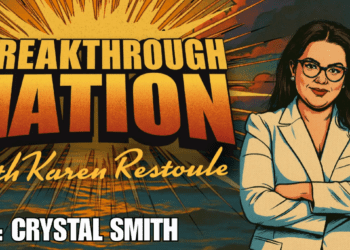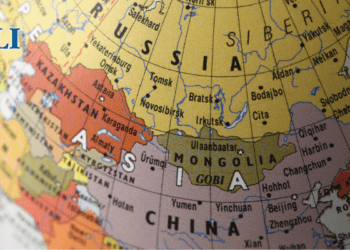This article originally appeared in the Hub.
By Chris Alexander, May 15, 2024
In March, the Globe and Mail reported that Canada’s population had grown by 1.3 million in 2023—the largest annual increase on record.
This surge was driven by higher numbers of immigrants, international students, temporary foreign workers, and asylum claimants.
Given that the 2021 census showed that 8.3 million Canadians, or 23 percent of our population, had an immigrant background, this latest increase means that, in a Canada of over 40 million people, one in four of us is a temporary or permanent resident, or was born abroad. This proportion of newcomers is the highest since Confederation, beating the previous record of 22.3 percent set in 1921. By comparison, the immigrant share of the U.S. population is today about 14 percent.
So what is driving these trends? Given that in recent decades immigration has been virtually the sole driver of Canada’s population growth, what overarching federal and provincial policy goals and real-world pressures are behind this recent surge?
Every year Canada’s minister of immigration, refugees, and citizenship tables what is called a “levels plan” in the House of Commons. This is a set of targets for how many permanent residents and refugees should be admitted to Canada in a given year, with projections for the two following years.
Under Canada’s Immigration and Refugee Protection Act (IRPA), as adopted in 2001 and amended and updated regularly by successive governments ever since, the federal government must consult with its provincial counterparts on three issues: the number of permanent residents to be admitted in a given year; their “distribution in Canada taking into account regional economic and demographic requirements”; and what we call settlement issues, namely “the measures to be undertaken to facilitate their integration into Canadian society.”
In concrete terms, this means federal and provincial officials are in touch constantly, with the minister meeting his or her provincial and territorial counterparts regularly, as well as many other groups with an abiding interest in immigration.
The minister also has the option to consult provinces on policies and programmes. For instance, how do we get more digital artists, welders, hairdressers, workers for fish or meat-packing plants, or harvesters in the autumn when Canadians do not fill the jobs? Quebec implements its own immigration programmes, which have become more restrictive in recent years, but consults the federal government on its own levels’ plan: every Quebec immigrant still receives a Canadian visa. All other provinces also have their own programmes—including the Provincial Nominee Programme and Atlantic Immigration Programme—accounting for 40 percent of economic immigrants this year, or one-quarter of our total permanent intake in 2024.
Canadian context
So far, so good. But how have these levels evolved in recent years? For the first fifteen years of this century, Canada’s annual immigration intake ranged from 220,000 to 260,000, though in 2010 we had 281,000, and in 2015, 272,000. From 2016 to 2019, between 286,000 and 341,000 newcomers arrived yearly. With the pandemic in 2020, this number fell to 184,000. From 2021 to 2024, it rose to between 405,000 and 485,000. In 2025 and 2026, our goal will be 500,000 new immigrants per year.
In other words, the number of immigrants coming to Canada in a given year is now double what it was, on average, between 2000 and 2015.
To put this in context, we now have the highest annual immigration levels since we admitted 400,900 newcomers in 1913 under Prime Minister Sir Robert Borden. While today’s annual immigration represents more than 1 percent of Canada’s population, in 1913 it was over 5 percent.
But what else has been happening? In just three years, the number of non-permanent residents in Canada has quietly doubled. In the third quarter of 2021, there were about 1.3 million non-permanent residents in Canada: about 560,000 workers, half a million international students, and 166,000 asylum claimants. By the first quarter of 2024, there were 2.7 million non-permanent residents—with all three categories (temporary workers, international students, and asylum seekers) each more or less doubling in only three years.
By March of this year, there were 329,000 asylum claimants in Canada, with 187,000 refugee protection claims pending before the Immigration and Refugee Board (IRB). (By way of comparison, in late 2015, at the end of my time as minister of citizenship and immigration, this backlog of pending claims was under 10,000.)
This bottleneck means ordinary refugee claims, which are supposed to be heard by law within 60 days, now take up to three years. As a result, the government has recently brought in new rules and additional resources for the IRB that are meant to speed decisions and processing of cases.
Global context
So what is driving upward trends in permanent immigration, temporary workers, international students, and asylum claims?
Let’s start with refugees and asylum seekers. In 2009, just over 40 million people had been forcibly displaced. In my time as minister, this number was rising fast due to genocide in Syria, civil breakdown in Venezuela, and other conflicts.
By June of 2023, serious wars in Ukraine, Sudan, and elsewhere in Africa, meant that over 110 million people were, as the UN High Commissioner for Refugees puts it, “forcibly displaced from their homes due to persecution, conflict, violence, human rights violations and events seriously disturbing public order.” In only fifteen years, the number of displaced people worldwide has almost tripled.
Since President Biden entered office, the number of migrants apprehended by patrols at the U.S.-Mexico border has oscillated between 100,000 and 250,000 per month, with 2.5 million encountered by U.S. border patrols in 2023.
By contrast, in 2013 U.S. Customs and Border Protection apprehended only 421,000 “illegal aliens”; in 2019, they apprehended 860,000.
In the febrile landscape of U.S. politics, this human drama on the Rio Grande makes for sensational headlines and salacious conspiracy theories. There is even hard evidence that state actors such as Russia are, via large-scale information warfare and other forms of influence, fanning the flames of this crisis in order to aid the Trump campaign and generally make U.S. politics even more grid-locked and chaotic.
This should come as no surprise since Russia, with the support of allies of convenience such as Turkey, actively “weaponised” Europe’s Syria-related migration crisis over 2014-16 in order to marginalize moderate voices and create fertile ground for xenophobic groups, though European politics have polarized less dramatically than other parts of the world, including the U.S.
Quite apart from conflicts and interference now triggering unprecedented forced displacement, including now from North Africa as well, Canada’s peer democracies have seen recent immigration figures jump. Australia saw a net inflow in 2022-23 of 518,000 people; over the same period, the U.K. had a net gain of 672,000, with 1.2 million newcomers arriving over 2022-23. Many attribute this recent spike to pent-up demand following the pandemic, when travel was restricted or postponed.
Indeed, all English- and French-speaking countries, as well as increasingly the European Union as a whole, are competing to attract more international students. Canada’s unique combination of strong institutions of higher education, work permits, and pathways to permanent residency have lifted our international student population from 330,000 in 2014 to over one million today.
The challenge with such large net inflows of immigrants, students, workers, and asylum seekers has not been to find them work or places to study. The main pressure points are increasingly over infrastructure needs—housing, transport, health care, and other basic services—as well as affordability. How can so many newcomers find an affordable place to live in Canada without inflating rents or house prices, or creating hardships for the population at large?
While the impacts of these larger flows on the housing market are complex, it is fairly clear that large numbers of international students have driven rents upward in many cities, while new construction of single-family, multi-family, or student rental units has not nearly kept pace with demand due to the pandemic-related slowdowns, higher interest rates, and prohibitive zoning in many municipalities.
At the same time, a growing student presence has brought enormous benefits to Canada, shaping a younger, larger, more dynamic, and innovative population, which on current trends (according to Statistics Canada) may reach 47 million by 2041.
Canada’s economic issues
In my view, the greatest overriding challenge Canada now faces—also a major disincentive for immigrants—is that for ten years incomes have stagnated. At the end of 2014, Canada’s inflation-adjusted per capita GDP was $58,162; by the third quarter of 2023, it was $58,111—a loss of $51 over nine years.
In comparative terms, Canada’s poor performance is even more striking: for two years (2011 and 2012), Canada’s per capita nominal GDP was higher than the U.S.: according to IMF figures, in 2012 a Canadian earned USD $52,745 per year, while an American earned USD $51,737 per year.
Now fast forward to this year, when the IMF projects our nominal per capita GDP to be USD $54,866 compared to $85,373 for the U.S.—meaning that after twelve years the average American earns 56 percent more, while Canadian incomes have stood still.
To add insult to injury, other advanced, high-income OECD economies where per capita GDP was lower than in Canada in 2012—such as Belgium, Finland, Germany, Ireland, Israel, and the Netherlands—now have higher per capita GDP.
What has created this growing discrepancy? This is a much longer story. The short answer is that business investment, productivity and the scale and value of our exports have, to put it mildly, not kept pace with the U.S. or many other peer economies over the past decade.
In a very short time, we have gone from being a country that was praised for low debt levels, a competitive tax system, innovative firms, prosperous cities, an educated workforce, and leadership on issues from energy to immigration to one that is considered to be heavily indebted, less affluent, less attractive to investors and falling behind—to the point where a leading Financial Times columnist has branded us the leading “breakdown nation.”
Immigration cannot solve these problems. Indeed, if such trends continue, the most qualified immigrants are unlikely to choose Canada. Moreover, the combination of record newcomer arrivals and stagnant incomes is souring Canadians themselves: after supporting immigration for many years by two to one, recent polls show disaffection growing, with Canadians now closer to evenly divided.
Immigration and the future of Canada
The bottom line is that immigrants, students, and workers chose Canada over centuries because we sustained high levels of growth and high standards of living. Canada’s declining affluence over the past decade undermines this pull factor—and is thus a major threat to our future ability to welcome newcomers.
By introducing caps both for international students and temporary residents as a whole—for the first time ever in Canada—our current government appears to agree that runaway inflows are unsustainable, particularly amid the slow expansion of our housing stock and lacklustre economic performance generally.
The most obvious areas for focused attention are asylum seekers, where the current backlog needs to be drastically reduced to ensure hearings are once again held within 60 days. This will allow Canada to sustain higher levels of refugee resettlement, which under our latest levels’ plan is now slated to decline slightly in 2025 and 2026.
Canada could easily have resettled 100,000 Syrian refugees since 2014 and 100,000 Afghans since 2021. After all, these are conflicts where people put their lives on the line for democracy, free speech, the rule of law, and women’s rights, often with Canadian support, but now face persecution in its most horrendous forms. Instead, we have so far resettled only 43,000 Afghans and 44,620 Syrians. This is a far cry from what Canada did for 120,000 Vietnamese refugees, otherwise adrift in small boats, when we welcomed them en masse starting in 1979.
Canada’s citizenship, immigration, study, and refugee programmes give our country a vital lifeline and a crucial advantage. But we cannot afford to be complacent. To meet the expectations of a next generation of newcomers, we need to become once again a leading destination for business investment and commercial success—a country where new firms, innovative products, and emerging sectors take root, find growing markets, and drive a new era of prosperity.
Chris Alexander was Canada’s Minister of Citizenship and Immigration (2013-15) and MP for Ajax-Pickering (2011-15). He is a distinguished fellow of the Macdonald-Laurier Institute and the Canadian international Council.






